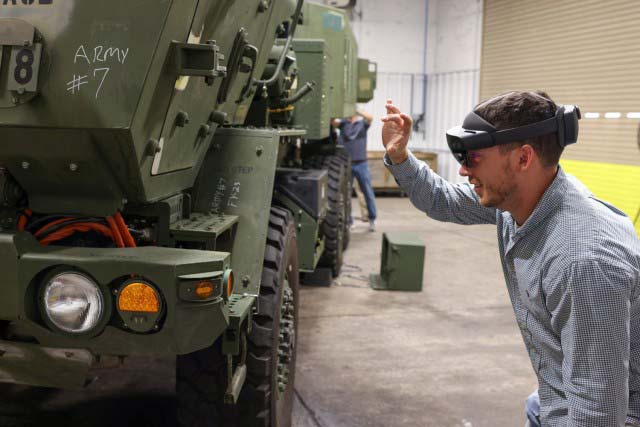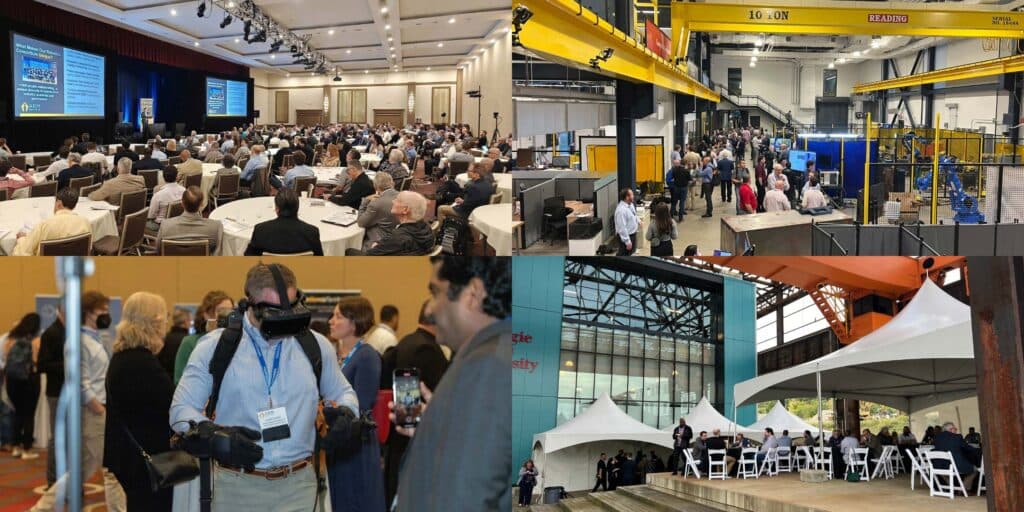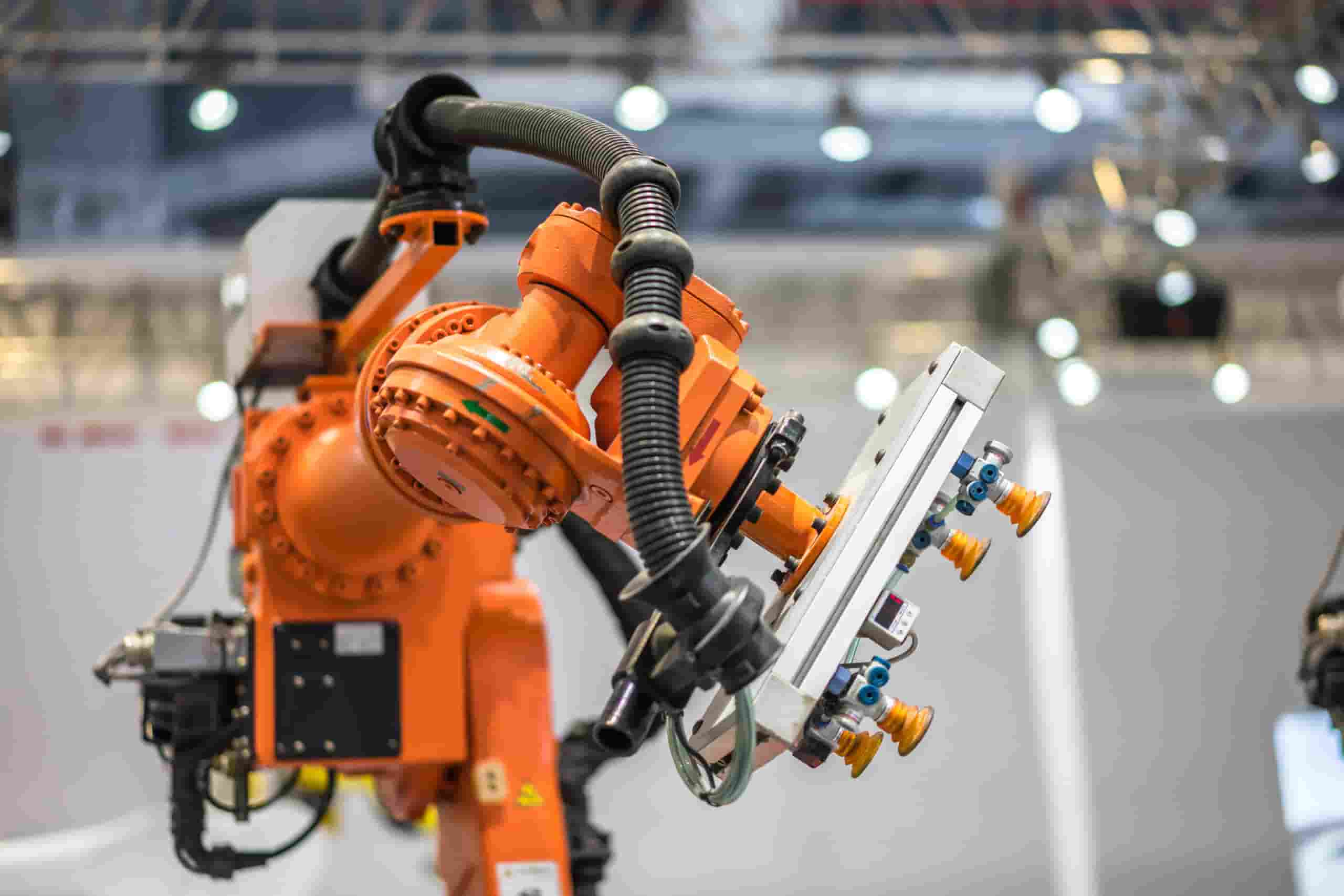
This project provides critical advancements needed to modernize the Organic Industrial Base (OIB) through the creation of automated vehicle paint masking and de-masking processes.
Project Team
Background
The Organic Industrial Base (OIB) is critical to supporting our warfighters and ensuring our national security. However, the average age of an OIB facility is around 80 years and many of these facilities still leverage processes and equipment from the time periods in which they were built. The Department of Defense widely recognizes this as a strategic opportunity to modernize our nation’s Organic Industrial Base, with robotics, AI, and workforce support programs playing key roles in modernization.
The ARM Institute Member consortium, comprised of thousands of individual subject matter experts representing 450+ member organizations across industry, government, and academia, stands ready to help the Department of Defense in its mission to modernize the Organic Industrial Base. By catalyzing collaboration across these organizations, OIB facilities, and the Department of Defense, the ARM Institute is uniquely positioned to support modernization.
The Extended Reality and AI-Assisted Paint Masking Project led by ARM Member GridRaster is a perfect example of this impact. Through this ARM Institute project, GridRaster collaborated with Letterkenny Army Depot on a solution for vehicle paint masking and de-masking processes that integrates extended reality (XR) and artificial intelligence (AI).
This AI and robotics project was funded through Office of the Secretary of Defense (OSD) Manufacturing Technology (ManTech) Organic Industrial Base (OIB) Modernization Challenge held in 2024. Following a workshop to identify crucial technological needs, OSD ManTech initiated the OIB Modernization project call through the Manufacturing Innovation Institutes (MIIs). This Challenge resulted in 104 proposal submissions from MII member companies. A selection of projects presented their proposals to a panel of OIB experts, DoD leadership, and industry leadership. Projects were selected based on their projected positive impact across the 47 DoD-owned OIB sites. Of the projects presented, three ARM Institute Member led projects were selected for funding, including the Extended Reality and AI-Assisted Paint Masking project. Learn more about the OIB Modernization Challenge and other selected projects here.
Read on to learn how GridRaster collaborated with Letterkenny Army Depot (LEAD) and the ARM Institute on a project to modernize vehicle paint masking and de-masking processes.
Problem Statement
Current workflows for vehicle paint masking and de-masking are manual in nature using 2D diagrams and technical manuals outlined in 3-ring binders. These processes are also time-consuming and error-prone due to the subjective nature in which the tolerances are perceived.
This project sought not just to build an automated solution to this problem, but also to reduce the time needed to return mission-critical assets to the warfighter. The outputs from this project directly contribute to this goal by providing artisans with modern tools that reduce task times from hundreds of hours to a fraction of that per vehicle.
As the DoD modernizes its sustainment infrastructure, this XR and AI-enabled solution stands as a transformative capability to increase operational readiness and sustainment across the force.
Technical Approach
This project centered on the following technical tasks:
- Requirement Definition, System Design, Data Collection: This task focused on the initial gathering of the specifications, requirements, and workflows of paint masking and demasking process at the Letterkenny Army Depot. The collected data was used to define the system architecture and workflow to achieve the target KPIs.
- Development of AI Models for 3D Object Detection, Alignment and Overlay of Army Vehicles: The team developed an Extended Reality (XR) application capable of using auto-detect capabilities for overlaying a texture mapped mesh on Army vehicles. Upon identification, the application can overlay a three-dimensional virtual model of the vehicle, relative to a ground truth created from a 3D model, onto the real-world view presented through the HoloLens2. This necessitated the implementation of spatial AI and computer vision techniques for real-time object detection and tracking, enabling precise registration to ensure accurate alignment of virtual and real-world elements. This provides users with an intuitive and immersive platform for tasks such as visualization, masked and un-masked areas, and detailed digital twin creation with their respective markings.
- Development of Application Storyboard for the Masking/De-masking Application on the XR Device: The team developed detailed drawings of the graphics, user interface design, and instructions for masking and de-masking workflows. The UI was designed in a way that integration into the existing masking and de-masking operations would be seamless and prevent delays or hardships for those utilizing the program.
- On-site Testing, Soliciting Feedback from End Users: The team then worked to test the developed technology in an operational environment. Automatic detection, alignment overlay, masking and de-masking instructions, and highlighting missed items were all tested on an Army vehicle to ensure performance, accuracy, consistency, and repeatability. Using the HoloLens2 device the user interface was presented to the end users in an operational environment. The feedback was overwhelmingly positive, and the project team iterated on the project based on the input they received from end users.
- Final Demonstration at Letterkenny Army Depot in Full Operational Environment: This project was demonstrated at the Letterkenny Army Depot to a variety of Letterkenny personnel, ARM Institute stakeholders, Pennsylvania Congressional Staff members, and other OIB Depot key stakeholders. Automatic detection and registration, precise overlay rendering using the GR software and the HoloLens2 HMD, detailed UI with step-by-step instructions for the masking process, error checks for un-masked areas, and workflow repeatability were all highlighted and demonstrated during this task. Users from the Letterkenny team were provided with hardware training to include the GR Server, HoloLens2, and a detailed application overview.
Impact
This modernization effort significantly enhanced the efficiency, functionality, and productivity of vehicle paint masking and de-masking processes, with a reduced footprint and substantially lower costs compared to traditional manual approaches and projector-based alternatives.
In addition to the successful completion and demonstration of the program, the team showcased enhanced capabilities, including a camouflage overlay prototype. Attendees were invited to participate in the demonstration by assuming the role of artisans, tracing the pattern overlay directly onto the HIMARS. By using baseline system capabilities GridRaster was able to showcase its adaptability to provide systems relevant to user needs.
The XR and AI-assisted paint masking system holds immense potential for widespread deployment across the Organic Industrial Base (OIB). This system is instrumental in sustaining military readiness through repair, overhaul, and manufacturing of DoD systems and platforms. Beyond its initial application, it can be extended to various paint masking and precision overlay applications on other platforms including helicopters, armored vehicles, and even small parts and components requiring intricate masking patterns. The ability to rapidly deploy high-accuracy holographic overlays directly onto equipment reduces setup time, eliminates costly rework, and ensures repeatable quality with minimal training.
Outside of defense, the same capabilities can be commercialized for use in aerospace, automotive, and heavy machinery industries. For instance, commercial aircraft manufacturers or vehicle assembly lines can benefit from precise spatial computing overlays during painting, sealing, or quality assurance procedures.
Meet the GridRaster Team at our 2025 Annual Member Meeting

GridRaster is a proud sponsor of our 2025 Annual Member Meeting taking place Sept. 3-5 in Pittsburgh, PA. This event is free to attend, but open only to ARM Members. Attendees can connect with GridRaster and other member organizations through our Member Showcase Hall at our meeting.
The Annual ARM Member Meeting convenes experts from across our 450+ member organizations for 2.5 days of networking, knowledge-sharing, collaboration, and technology demonstrations.
Learn more about the Member Meeting here. Members can register for free in the ARM Member Community or email us at [email protected] for assistance.
Not a Member? Join by August 2025 to be eligible to attend.
Collaborate to Strengthen US Manufacturing
ARM Institute Members lead the way to a future where people and robots work together to respond to our nation’s greatest challenges and to develop and produce the world’s most desired products. By becoming a member of our 450+ member organization consortium, you’ll join thousands of subject matter experts in building the future of US manufacturing through robotics, AI, and workforce innovations. Your membership unlocks not only access to member-exclusive events and webinars, including our Annual Member Meeting, but also project funding opportunities, project outputs, networking, a digital platform for collaboration, and more.
Explore membership here or email us at [email protected] to learn how you can contribute to this work.
Explore membership
ABOUT THE ARM INSTITUTE
The Advanced Robotics for Manufacturing (ARM) Institute is a Manufacturing Innovation Institute (MII) funded by the Office of the Secretary of Defense under Agreement Number W911NF-17-3-0004 and is part of the Manufacturing USA® network. The ARM Institute leverages a unique, robust, and diverse consortium of 450+ members and partners across industry, academia, and government to make robotics, autonomy, and artificial intelligence more accessible to U.S. manufacturers large and small, train and empower the manufacturing workforce, strengthen our economy and global competitiveness, and elevate national security and resilience. Based in Pittsburgh, PA since 2017, the ARM Institute is leading the way to a future where people & robots work together to respond to our nation’s greatest challenges and to produce the world’s most desired products. For more information, visit www.arminstitute.org and follow the ARM Institute on LinkedIn and X (formerly Twitter).
